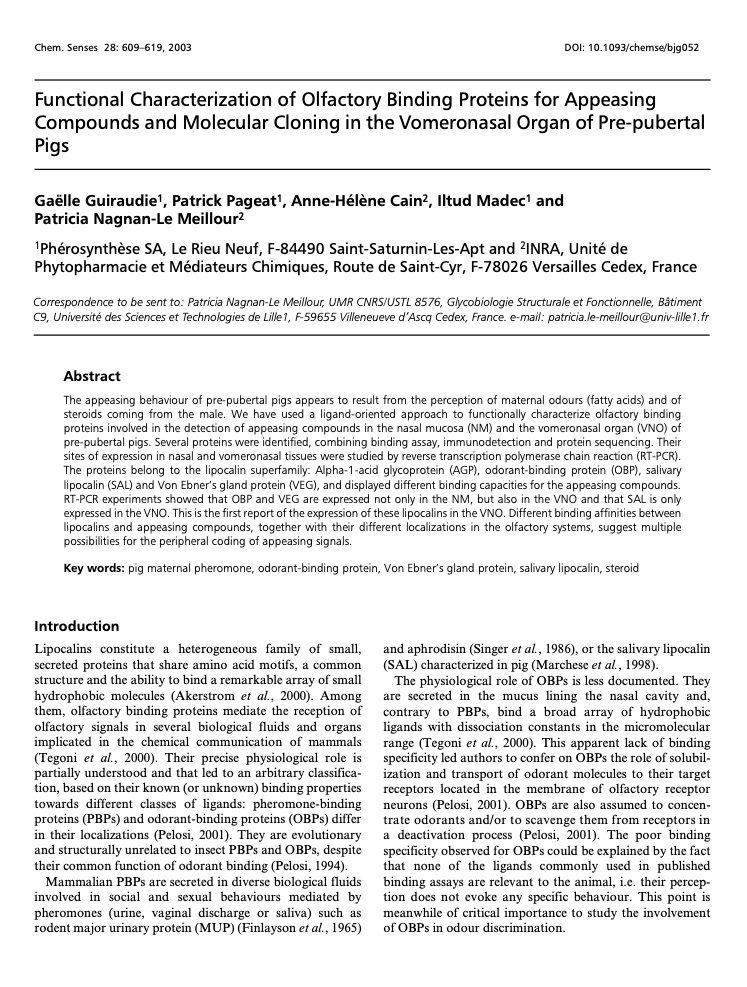Abstract:
The appeasing behaviour of pre-pubertal pigs appears to result from the perception of maternal odours (fatty acids) and of steroids coming from the male. We have used a ligand-oriented approach to functionally characterize olfactory binding proteins involved in the detection of appeasing compounds in the nasal mucosa (NM) and the vomeronasal organ (VNO) of pre-pubertal pigs. Several proteins were identified, combining binding assay, immunodetection and protein sequencing. Their sites of expression in nasal and vomeronasal tissues were studied by reverse transcription polymerase chain reaction (RT-PCR). The proteins belong to the lipocalin superfamily: Alpha-1-acid glycoprotein (AGP), odorant-binding protein (OBP), salivary lipocalin (SAL) and Von Ebner’s gland protein (VEG), and displayed different binding capacities for the appeasing compounds. RT-PCR experiments showed that OBP and VEG are expressed not only in the NM, but also in the VNO and that SAL is only expressed in the VNO. This is the first report of the expression of these lipocalins in the VNO. Different binding affinities between lipocalins and appeasing compounds, together with their different localizations in the olfactory systems, suggest multiple possibilities for the peripheral coding of appeasing signals.
Auteur: Gaëlle Guiraudie, Patrick Pageat, Anne-Hélène Cain, Iltud Madec and Patricia Nagnan-Le Meillour
En savoir plus: https://academic.oup.com/chemse/article/28/7/609/329908

